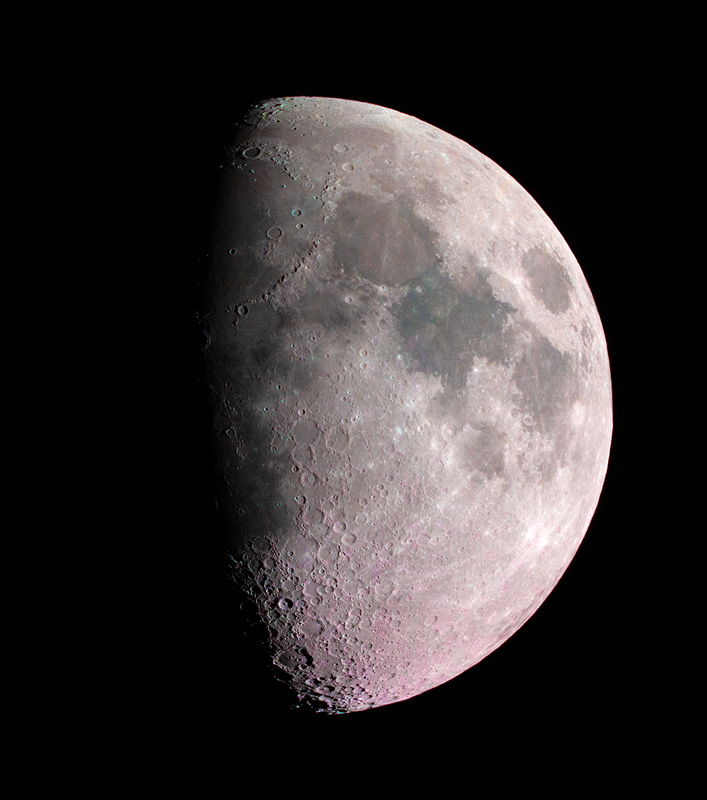Moon Craters, Orion Nebula
Posted: 12 March 2022
Thursday afternoon, 10 March 2022, I had a new good friend visit. I met Dave Smith, a professional photographer, in 2021 when he asked me to teach him how to photograph the Milky Way. We spent a long night at Oracle State Park in 2021 and since then he is hooked. He has attended a star party at the Park and will be giving photography workshops at upcoming events at the Park. This was his first visit to Cassiopeia Observatory. Dave took this iPhone photo of me in the observatory.

Photo courtesy of Dave Smith
Thursday night was cloudy and very windy. With a forecast of rain I put the Dome Cover ON. The sky cleared on Friday, 11 March.
|
Open: Friday, 11 March 2022, 1830 MST Temperature: 63°F |
Session: 1733 Conditions: Clear, breezy |
Equipment:
12" f/8 LX600 w/StarLock
2" 24mm UWA eyepiece
2" 5.5mm 100° eyepiece
2" UHC filter
Camera:
iPhone 13 Pro Max
D850 DSLR
1831 MST: Sunset. Took the Dome Cover OFF.
1843 MST: Dome OFF (onto PZT).
1844 MST: LX600 ON, StarLock OFF, High Precision OFF.
Viewed the Moon, 102X.
Took this handheld afocal 102X photo of the Moon using the iPhone 13 Pro Max and the iOS app NightCap Camera (ISO 34, 1/640sec, 1X lens).

Then did some lunar observing, 443X.
Took these handheld iPhone afocal 443X photos with NightCap Camera (ISO 200, 1/120sec, 1X).
Crater Plato

Crater Clavius

Did some more lunar observing, 443X. Sunrise at Crater Copernicus was nice, as seen in this handheld iPhone afocal 443X photo taken with NightCap Camera (ISO 200, 1/60sec, 1X lens).

I continued to watch sunrise at Copernicus for the next 30 minutes.
Next, I mounted the D850 DSLR at prime focus + focal reducer + UHC filter, focused on the Moon, and locked the 12" primary mirror. Took this image of the Moon, 1/1250sec, ISO 1600, White Balance 5560K (color corrected and saturation increased, cropped).

Slewed to M42 (Great Nebula in Orion).
1942 MST: StarLock ON.
Took six StarLock autoguided images, PF+FR+UHC, ISO 1600, WB5560K, using exposure lengths of 30 seconds, 20 seconds, 10 seconds, 5 seconds, 2 seconds, and 1 second. During post-processing I used the Photoshop technique of merging images that was described on page 65 in the article "Breaking Bad Photoshop Habits" in the March 2022 issue of Sky & Telescope magazine. This is the resulting image, slightly cropped.

Not bad for a moonlit sky. Using the UHC filter really helped counter the effects of the bright sky.
1947 MST: StarLock OFF.
Viewed the Orion Nebula (M42), 102X.
Viewed the Moon, 102X and 443X.
1959 MST: LX600 OFF.
2002 MST: Dome ON.
|
Close: Friday, 11 March 2022, 2009 MST Temperature: 47°F |
Session Length: 1h 39m Conditions: Clear |
The next star party at Oracle State Park has been announced. I'll be there.
Comments are welcome using Email. Twitter users can use the button below to tweet this report to their followers. Thanks.
Cassiopeia Observatory Home Page
Copyright ©2022 Michael L. Weasner / mweasner@me.com
URL = http://www.weasner.com/co/Reports/2022/03/12/index.html
